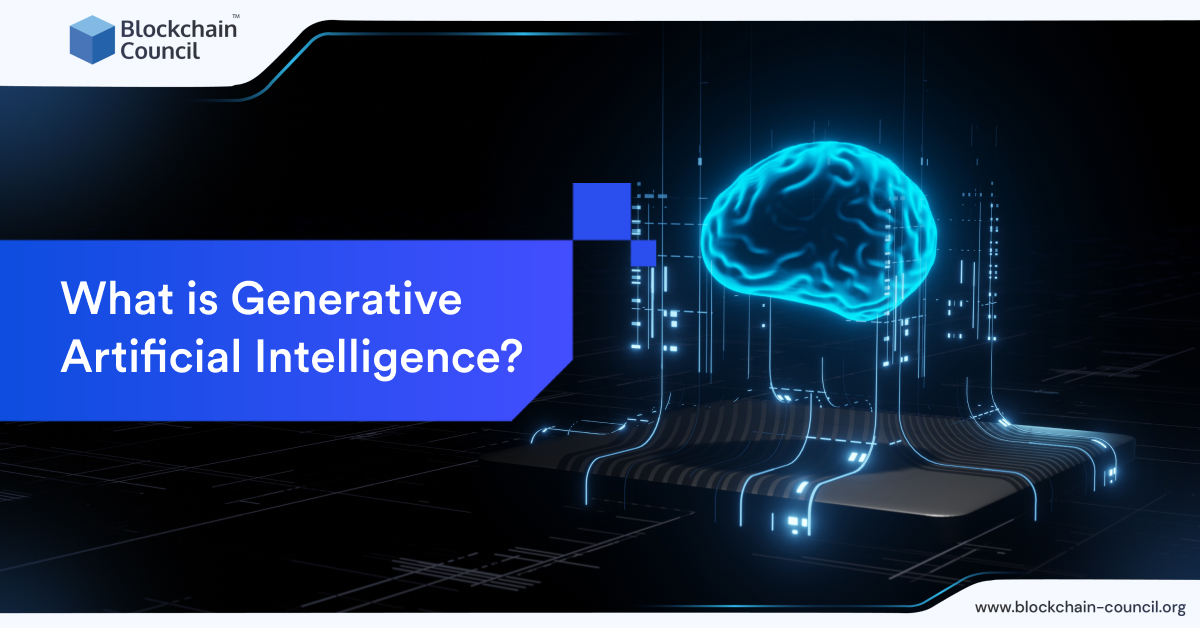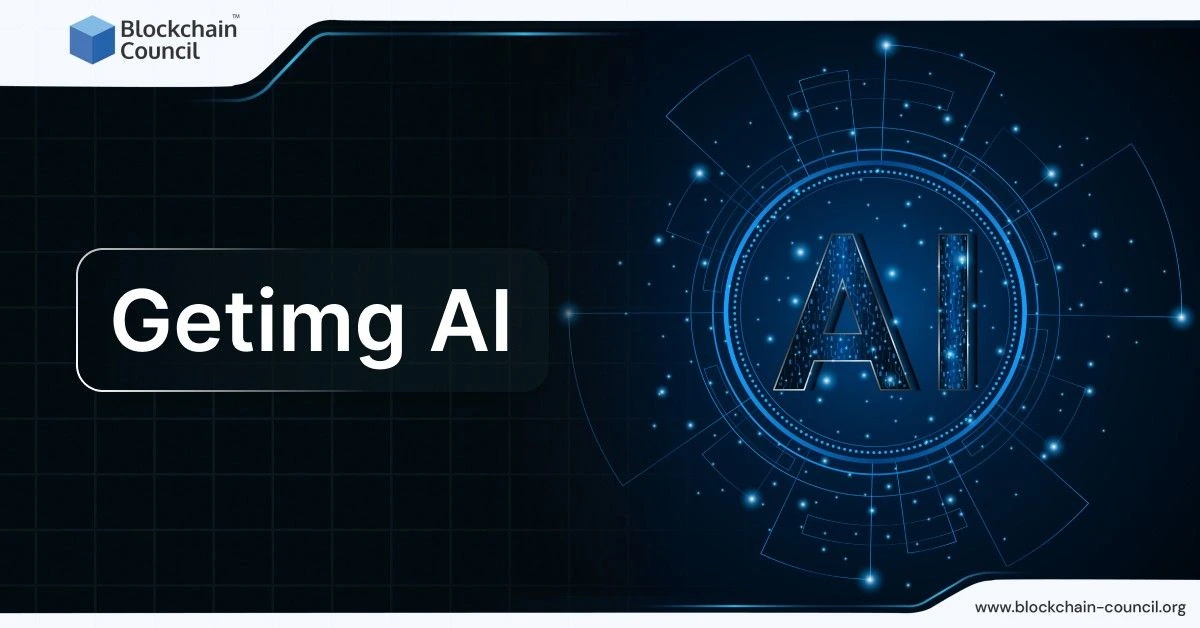
- Blockchain Council
- May 21, 2024
We find ourselves at the dawn of a transformative era in artificial intelligence, marked by a generational shift. In the past, machines could not exhibit behaviors that closely resembled those of humans. However, a remarkable breakthrough has occurred with the advent of new generative AI models. These cutting-edge systems not only possess the ability to engage in sophisticated conversations with users but also produce content that appears to be genuinely original.
To grasp the significance of this progress, let’s consider an example. Imagine an AI-powered chatbot that can engage in chat-based conversations with users. In the past, such chatbots often provided pre-programmed responses that were limited in their range and lacked human-like qualities. The potential is awe-inspiring. In this article, we embark on a journey to uncover what it truly entails, why it holds immense significance, the progress made thus far, the other important considerations accompanying this pursuit, and what challenges stand ahead.
Join us as we delve into the mysterious world of generative AI, where machines seek to rival human intelligence and shape the future of our world.
What is Generative Artificial Intelligence?
Generative artificial intelligence, or generative AI or GenAI, is an advanced artificial intelligence system that can produce text, images, or other forms of media based on given prompts. Unlike traditional AI systems that primarily classify or predict data, generative models are designed to learn the patterns and structure of input data and then generate new content that resembles the training data while introducing some novelty.
Let’s consider an example to understand generative AI better. Suppose we have a generative AI system trained on a dataset of famous novels. When provided with a prompt like “Write a sentence describing a mysterious castle at midnight,” the AI system can generate a unique sentence that captures the prompt’s essence while adding its own creative touch. The generated sentence may be, “The eerie moonlight bathed the ancient castle in an aura of secrecy as whispers of forgotten secrets echoed through the midnight air.”
This is among many potential examples of how generative AI will be huge and change how we think and work. It will impact our way of working and approach to our work. While some people will use it to increase their creativity, there is no lack of people who fear that generative AI is a potential threat to their jobs.
How does Generative AI work?
Generative AI models have paved our way into a new era of artificial intelligence, propelled by the remarkable prowess of neural networks. These cutting-edge models delve deep into existing data, unraveling intricate patterns and structures to create fresh and innovative content. Leveraging the power of unsupervised and semi-supervised learning, these models empower organizations to tap into a vast reservoir of unlabeled data, creating foundation models that form the bedrock of AI systems.
The enchanting realm of ChatGPT and Stable Diffusion, where linguistic marvels and visual sorcery intertwine. ChatGPT weaves captivating essays from text prompts, while Stable Diffusion brings forth photorealistic images from the written word. Many other tools can generate video from simple text, and others can help you perform a specific task. Generative AI will soon become part of our daily lives and change them in ways we have not fathomed yet.
What is the Application of Generative AI
Generative AI emerges as an indispensable ally, transforming the creative landscape for professionals across diverse fields. Its application knows no bounds, offering invaluable assistance to creatives, engineers, researchers, scientists, and beyond. With their versatility, generative AI models can process inputs spanning text, image, audio, video, and code and effortlessly generate fresh content across these modalities.
Picture a world where text morphs into stunning visuals, images evolve into mesmerizing melodies, and videos seamlessly transform into written narratives. Generative AI heralds an era of unlimited possibilities, opening doors to innovation and ingenuity in every industry and individual pursuit.
Why is Generative Artificial Intelligence such a Buzz nowadays?
Now that we know how useful generative AI can be and how it works, it’s time to understand why it has gained so much traction in recent months.
Prepare to be Astonished
In a world where AI advancements continue to captivate minds, generative AI has emerged as the frontrunner, seizing the spotlight with its unparalleled capabilities. Pioneering programs like OpenAI’s ChatGPT and DALL-E have become the talk of the town, unleashing a wave of fascination and excitement.
Elevating Conversations
ChatGPT, an AI-powered conversational chatbot, has taken the world by storm. Launching unprecedented success, it quickly amassed over a million users per week, leaving onlookers stunned. Its ability to engage in natural and sophisticated conversations has reshaped the chatbot landscape. Gone are the days of pre-programmed responses; ChatGPT harnesses the power of generative AI to comprehend diverse user inputs, delivering contextually appropriate and coherent responses that blur the line between human and machine interaction.
Visual Wonders
Prepare to be amazed by DALL-E. This mesmerizing AI image generator has shattered the boundaries of what was possible. By leveraging generative AI, DALL-E can conjure up awe-inspiring visual content in the blink of an eye. From stunning landscapes to imaginative creatures, it crafts seemingly original images based on user prompts, transcending the limits of human imagination. Witness the wonder as this revolutionary system discerns the essence of a prompt and weaves it into an artistic masterpiece.
The Expanding Universe of Generative AI
The impact of generative AI reaches far beyond ChatGPT and DALL-E, extending into many use cases that push the boundaries of creativity and innovation. Companies like Google, Microsoft’s Bing, and Opera have recognized the immense potential of generative AI and have eagerly joined the race to unlock its full capabilities. With each new entrant, the buzz surrounding generative AI intensifies as fresh ideas emerge and uncharted possibilities unfold.
Machine Learning Unleashed
At the heart of generative AI lies the mighty force of machine learning. This sophisticated subset of AI empowers systems to make predictions based on the vast knowledge they acquire. Machine learning comes alive within the generative AI framework, breathing life into unprecedented creative outputs. Witness the astounding ingenuity of DALL-E as it deciphers the true essence of a prompt, crafting images that resonate deeply with our human sensibilities. Generative AI and machine learning, intertwined in perfect harmony, redefine the very fabric of innovation.
Also read: Machine Learning Vs Artificial Intelligence
The Generative AI Landscape
Generative AI is not limited to ChatGPT and DALL-E; it permeates a broad spectrum of systems and algorithms, allowing revolutionary creations to be born. Among these groundbreaking ventures is Google’s forthcoming MusicLM, an AI text-to-music generator poised to change the face of musical composition. Additionally, Google’s Bard has entered the fray, although its performance may not match the resounding success of ChatGPT. These developments exemplify the vast potential of generative AI, offering tantalizing glimpses into a future brimming with extraordinary possibilities.
Generative AI Continues to Thrive
As generative AI gains momentum, it shatters preconceived notions, redefining what AI can achieve. The journey has only just begun, and the allure of generative AI continues to grow. Join the ever-expanding community.
Major Benefits of Generative Artificial Intelligence
Generative AI has emerged as a game-changer, bringing forth many benefits that revolutionize industries and open up new frontiers of innovation. Let us delve into some of the key advantages offered by generative AI:
Unleashing Creativity
Generative AI algorithms can generate new and original content, seamlessly mimicking human creations. Whether it’s crafting lifelike images, captivating videos, or compelling text, generative AI fuels applications in entertainment, advertising, and the creative arts, unlocking endless possibilities for captivating and immersive experiences.
Enhancing AI Efficiency and Accuracy
Generative AI algorithms play a pivotal role in elevating the performance of existing AI systems. By harnessing generative AI, tasks such as natural language processing and computer vision can significantly improve efficiency and accuracy. Synthetic data generated by generative AI algorithms is a valuable resource for training and evaluating other AI algorithms, leading to enhanced capabilities and more reliable outcomes.
Unveiling Hidden Insights
Generative AI algorithms can explore and analyze complex data novelty. Generative AI empowers businesses and researchers to glean deep insights from their data by uncovering hidden patterns and trends that may elude conventional analysis. This newfound knowledge enables informed decision-making, drives innovation, and fuels competitive advantage.
Automating and Accelerating Processes
Generative AI algorithms streamline and expedite many tasks and processes, saving businesses and organizations precious time and resources. By automating repetitive or time-consuming processes, generative AI unlocks efficiency gains and enables teams to focus on higher-value activities. Generative AI catalyzes increased productivity and operational excellence from content generation to data synthesis.
Major Challenges of Generative Artificial Intelligence
As generative AI continues to evolve, several challenges lie ahead, presenting opportunities for growth and innovation in the field. Let us explore these hurdles and their implications:
The scale of compute infrastructure
Generative AI models boast colossal parameter sizes, demanding robust and efficient computing infrastructure for training. This necessitates substantial capital investment, technical expertise, and access to large-scale computing resources. The magnitude of data required to train models like diffusion models can reach millions or even billions of images, calling for extensive computational power in the form of GPUs. Meeting these infrastructure requirements is essential to propel generative AI forward.
Sampling speed
The sheer scale of generative models can introduce latency in generating instances, posing challenges for real-time interactive use cases. Applications such as chatbots, AI voice assistants, and customer service systems require swift and accurate responses. While diffusion models excel in producing high-quality samples, their sampling speeds may need to be higher for time-sensitive scenarios. Addressing this speed disparity is crucial for seamless user experiences.
Lack of high-quality data
Generative AI heavily relies on high-quality, unbiased data for training. However, not all data is suitable, and some domains have limited availability. Certain areas, like scarce 3D assets, need to be improved due to their scarcity and high development costs. To overcome this hurdle, substantial resources and efforts are required to curate and develop rich datasets that fuel the training of generative models across diverse domains.
Data licenses
Obtaining appropriate licenses poses a significant challenge in utilizing existing datasets or building bespoke datasets for training generative models. Organizations must navigate the intricacies of intellectual property and secure commercial licenses to avoid infringement issues. This intricate process is crucial for ethical and legal compliance, highlighting the importance of robust data governance frameworks.
Future of Generative Artificial Intelligence
Even when there are a lot of challenges in the successful implementation of generative AI, the horizon of generative AI shines with a bright glow, buoyed by recent developments that pave the way for remarkable advancements. OpenAI’s announcement of API access to ChatGPT and recently unveiled GPT-4 signal a transformative wave of new chatbots and generative AI interfaces.
OpenAI’s vision is clear: to create tools that serve a greater purpose, benefiting individuals and societies. The release of GPT-4 as the underlying engine for ChatGPT, accompanied by API access, empowers businesses and individuals to harness its capabilities and build custom applications atop this powerful foundation. The arrival of GPT-4 brings forth a multitude of exciting possibilities.
Enhanced accuracy and reduced bias are just the tip of the iceberg. But, the spotlight currently shines on its multimodal nature—a groundbreaking feature that accepts images and text as inputs, albeit generating text as outputs. This marks a significant stride forward, as previous generative AI models were confined to specific domains, excelling in either text or image generation. The advent of multimodal capabilities opens a world of unprecedented potential, revolutionizing the very fabric of generative AI.
As we peer into the future, the fusion of text and image generation heralds a game-changing paradigm. Generative AI transcends its current limitations, paving the way for more versatile and comprehensive AI systems. The convergence of modalities empowers these systems to understand and generate content across multiple dimensions, unlocking novel applications and transformative experiences yet to be fully explored.
The road ahead is paved by the promise of generative AI’s evolution. With each stride forward, we venture closer to a future where AI systems seamlessly integrate diverse modalities, amplifying their impact and enriching the human experience. As boundaries blur and possibilities expand, the transformative power of generative AI reaches new heights, forever reshaping the landscape of technology and human interaction.
How should you Prepare?
Generative artificial intelligence will make rebellious changes in the job market and automation scope. It won’t be limited to a single job or occupation. More and more companies will replace their underskilled labor with generative tools and systems because they will be much more efficient in performing tasks and require much fewer resources and time.
But there is still much time left before we have to worry about generative AI taking over or affecting our jobs in any manner. As someone interested in the technology or looking to become an AI developer. You should keep updated about the changes happening in the area and how they will impact the world and you as an engineer.
The best way to learn is to equip yourself with any revered certification course that teaches you much more than what is available in the articles on the internet. Blockchain Council has perfectly tailored courses to meet those needs, and as an AI enthusiast, you should check out that course as it will help you expand your knowledge about the subject.
Conclusion
The disruption by generative AI in recent months is a clear sign of how the dynamics in the workplace and other spheres of life will change in the upcoming decades. We will depend on generative AI for most of our work simply because it is much more capable and efficient than us in performing that task. While the value of human intelligence is poised to grow simultaneously for its uniqueness, many mundane and low-key tasks will be performed by such tools.
As generative AI becomes more and more prominent in workplaces, knowledge of how to use it will be a valuable resource, and anyone who can mitigate the best practice to use it will be rewarded accordingly. If you still need to be equipped with the necessary knowledge, this might be the perfect time to jump on the bandwagon and learn about the technology in detail. We have one of the best online courses on the related subject, which will help you get all the information you need to transport your career and become secure from any kind of workplace scrutiny.
Frequently Asked Questions
What can generative AI be used for?
Generative AI has a wide range of applications across various fields. It can generate realistic images, videos, and audio, creating realistic virtual environments and characters for movies, video games, and simulations. Generative AI can also assist in data augmentation for training machine learning models, generating synthetic data to supplement limited datasets. It has shown promise in aiding creative endeavors by producing original artwork, music, and literature. Additionally, generative AI can be leveraged in drug discovery, designing new molecules with desired properties, and optimizing complex systems, such as transportation and logistics, by generating efficient solutions.
How does generative AI create new content?
Generative AI relies on complex algorithms and neural networks to create new content. One popular approach is generative adversarial networks (GANs), where two neural networks compete, a generator and a discriminator. The generator network produces synthetic content, such as images or text, while the discriminator network assesses the authenticity of the generated content. Through an iterative process, the generator network learns to improve its output, aiming to fool the discriminator into considering the generated content as real. This feedback loop allows the generative AI to refine its creations, gradually generating increasingly convincing content that is indistinguishable from human-created content.
What is the risk of generative AI?
While generative AI presents exciting possibilities, there are also risks to consider. One concern is the potential for misuse, where malicious actors could exploit generative AI to create deep fake videos or images for deception or manipulation. These manipulated media can be used to spread disinformation, impersonate individuals, or incite unrest. Another risk involves privacy concerns, as generative AI can synthesize realistic personal information, raising issues related to identity theft and unauthorized data generation. Furthermore, there may be legal and ethical questions surrounding the ownership and intellectual property rights of content generated by AI systems. Developing safeguards, regulations, and detection mechanisms to mitigate these risks and promote the responsible use of generative AI is crucial.
What is the field of generative AI?
Generative AI is a subfield of artificial intelligence that focuses on developing algorithms and models capable of creating new content, often mimicking or extending human creativity. It combines machine learning, deep learning, and probabilistic modeling techniques to generate original, diverse, and coherent output. The field encompasses various approaches, including generative adversarial networks (GANs), variational autoencoders (VAEs), and reinforcement learning-based models. Researchers in generative AI strive to understand and improve the underlying mechanisms of creativity and explore applications in areas such as art, entertainment, design, and scientific discovery. By pushing the boundaries of what machines can create, generative AI opens up exciting possibilities for human-computer collaboration and innovation.





































































 Guides
Guides News
News Blockchain
Blockchain Cryptocurrency
& Digital Assets
Cryptocurrency
& Digital Assets Web3
Web3 Metaverse & NFTs
Metaverse & NFTs
